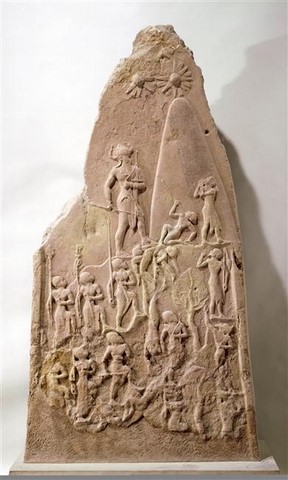Rome and Jerusalem - a stratigraphy-based chronology of the Ancient World
by Gunnar Heinsohn

We have asked Gunnar Heinsohn to write a summary of his resurrections of ancient empires, that are slowly deleted from our history books, and connect these results to his work on AD stratigraphies (published in Q-MAG.org) to give us a rough estimate of the years since the beginning of the Bronze Age that can be substantiated with archaeology.
Gunnar has, since 1987, rediscovered the supposedly untraceable Chaldaean cradle of civilization in land of Kal, the indigenous name of the so-called Sumerians, dated some 1600 years earlier but unknown before the 1860s. Ninos, the first “world ruler” mentioned by the Greeks he has identified with Nimrod and Naram Sin of the Bible and the Old Akkadians respectively (pic.: Stele of Naram Sin of Akkad, Musée du Louvre, Paris). The deleted Empire of the Medes, Indo-Aryan horse breeders, he has tracked down in the Mitanni, no less Indo-Aryan horse breeders that were unknown before the late 19th century. The powerful Scythians - competing with the Medes for domination – he sees in the Qutheans trying to take over the Near East some 1600 years earlier.
He claims that he can even pin down the time and context of the Exodus or King David’s battle for Jerusalem that scholars have pushed aside as mere fairy tales.
JERUSALEM AND ROME is a very brief text. Yet, we believe that it contains enough challenging material to reconsider the past of our civlization.
Anne-Marie de Grazia
September, 2019

